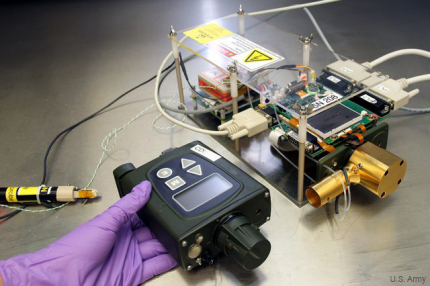Handheld chemical detector can now sniff out explosives
With a few small add-ons, Army scientists adapt the familiar JCAD so that it can identify explosive residue.

With the threats from improvised explosive devices and other ordnance all too common, the Army has seen the need for a portable explosives-detection device that soldiers could carry with them in the field. After years of work, scientists at the Army’s Edgewood Chemical Biological Center are making it a reality—not by building a new device, but by adapting a device already in wide use.
Researchers have retooled the Joint Chemical Agent Detector used by all the military services so that it can also detect explosive residue in addition to the chemical agents it’s been detecting for the past 25 years, the Army said in a release.
The dual-use JCAD grew out of an Army Technology Objective launched in 2010 to find out whether any detectors currently used could be adapted for detection of explosives, the residue from which is often invisible to the eye. Since there were already about 56,000 JCADs in use across the services, ECBC scientists started there.
Adapting the detector presented a few challenges, though. First off, the JCAD would still have to be able to detect chemical agents, and the program mandated that the hardware of any detector couldn’t be changed. Second, chemical detection is based on vapors, which are not a significant trait of explosive solids.
The solution, after research into the detection of explosive solids, was to add several elements to the JCAD, including a dopant that changes the detector’s chemistry for detecting explosives. Other add-ons are a rain cap with a different inlet and a probe swab. The swab wipes a surface and retracts back into the inlet, where the sample is heated to a temperature that vaporizes the residue, a process that allows explosives to be identified. The JCAD can now detect about a dozen explosive compounds, and researchers said more could be added, including homemade explosives.
Adapting the familiar JCAD for explosive detection could prove to be a cost-effective way of meeting what the military has identified as a real need. ECBC scientists are working on a concept of operations and plan to demonstrate the explosives-detecting JCAD next year.
"Within the Army, there is no other automatic, near real-time explosives detector at this time. There are many explosives detectors, but not ones that are dual-use and automatic," Charles Harden, a Leidos contractor with ECBC's Point Detection Branch, said in the release. "The best part is that the technology is already out in the field, and warfighters have been trained on this equipment. All we're doing is introducing small add-ons that will have a big impact."




